March Garden Ideas: Spruce Up Your Outdoor Space
March is an exciting month for gardeners. As winter fades, it’s time to think about preparing your garden for the vibrant months ahead. Whether you’re planting vegetables, flowers, or tending to your fruit trees, the possibilities are endless.
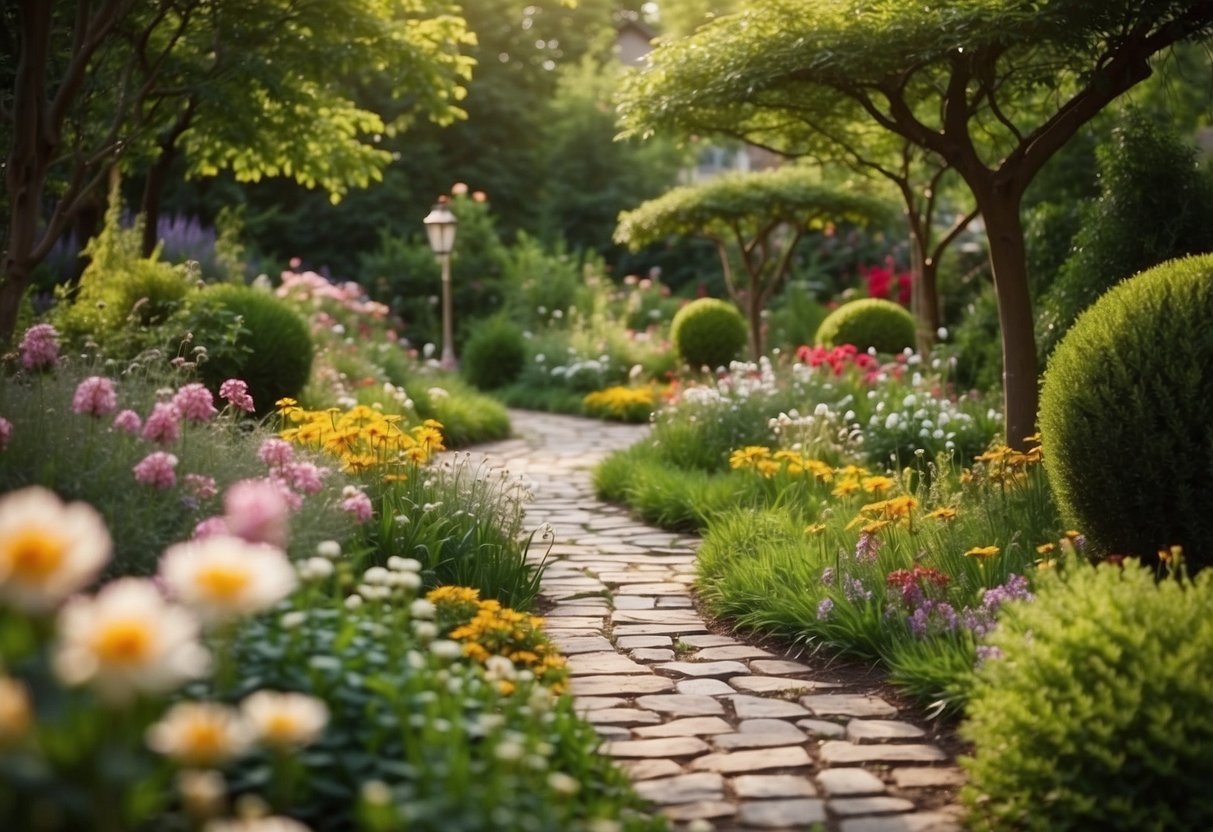
What should you plant in March to make your garden thrive? This article will guide you through various options and provide useful tips for a successful gardening season.
1) Plant Sweet Peas

March is the perfect time to plant sweet peas. These delightful flowers can add a splash of color to your garden.
Sweet peas thrive in rich, composted soil. Make sure the ground is well-prepared before planting. Sow the seeds about an inch deep and space them about a foot apart.
Keep the soil moist. Regular watering is important to ensure healthy growth and abundant blooms. You can use a pH of 7.0 to 7.5 for the best results.
A little care goes a long way. Enjoy watching your sweet peas grow and brighten your garden in no time!
2) Start Onions from Seeds

Starting onions from seeds is a great project for March. First, you’ll need seed starting trays and moist seed starting mix. Fill the trays almost to the top and make small holes for the seeds.
Sprinkle a few seeds into each hole and cover lightly with soil. Keep the trays warm, around 75°F. You can place them on top of your fridge or use a heat mat to help with this. Keep the soil moist by misting it with water.
Using a plastic dome or bag can trap humidity and speed up germination. Check daily and be patient; it may take a couple of weeks for sprouts to appear.
3) Prune Rose Bushes

March is a great time to prune your rose bushes. Start by removing dead branches and canes. Look for green wood, indicating live tissue.
Next, prune any broken or unhealthy branches. Cut them back to healthy wood. You can identify healthy wood by its firmness and lack of discoloration.
Finally, remove crossed branches. These can block sunlight and airflow. Clip away branches crossing through the center.
4) Clean Bird Baths
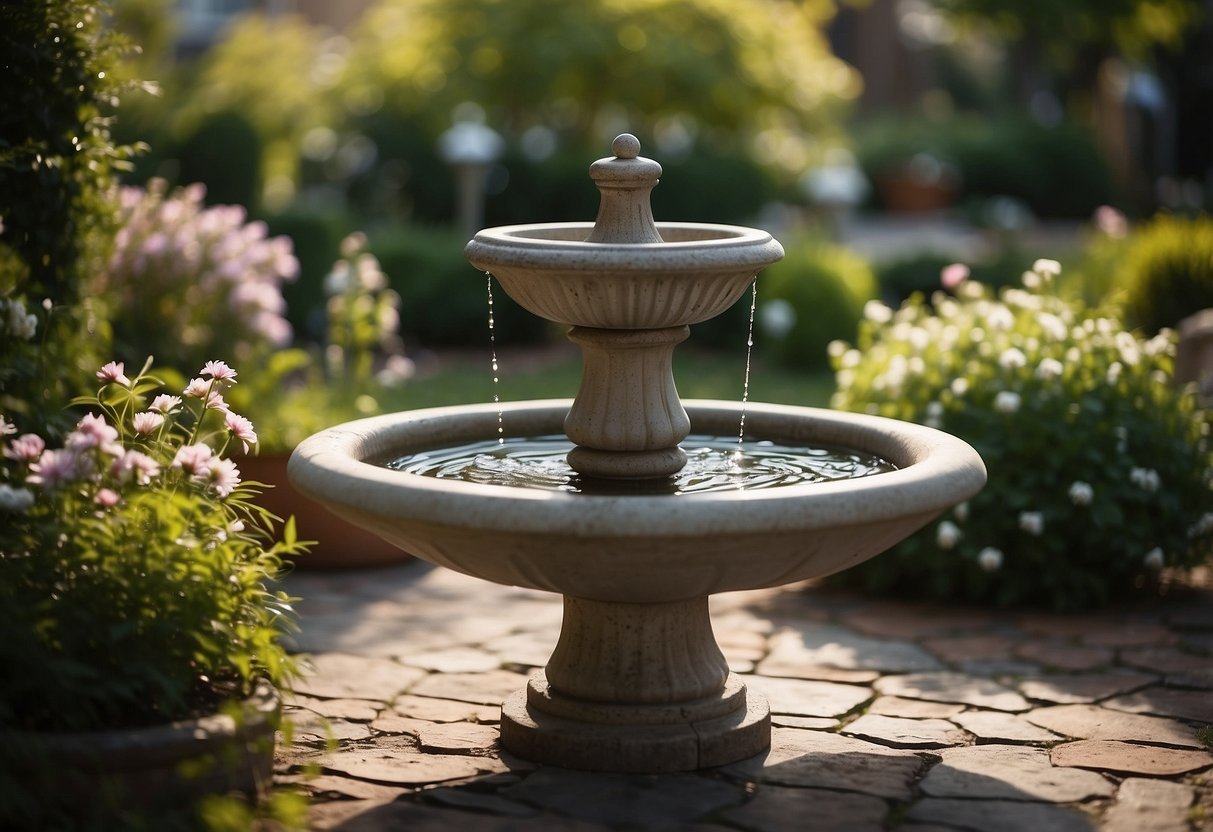
March is the perfect time to clean your bird baths.
Remove any leaves and debris that have collected over the winter.
Scrub the bird bath with a brush and mild detergent.
Rinse it thoroughly to ensure no soap residue is left.
Clean water is essential for birds to drink and bathe. Regular cleaning helps prevent algae growth and keeps birds healthy and happy. Adding a bird bath to your garden will attract more birds, bringing liveliness and beauty to your outdoor space. Keep it clean for the best results.
5) Plant Bare-Root Roses

March is a great time to plant bare-root roses. First, soak the roots in water for at least two hours before planting.
Choose a sunny spot in your garden. Dig a hole about 18 inches deep and wide. Add composted manure to the hole for nutrients.
Remove any damaged roots with clean pruners. Place the rose in the hole, spreading the roots out carefully. Fill the hole with soil, water well, and mulch to retain moisture.
For more details, check out this guide on how to plant bare-root roses.
6) Mulch Flower Beds

Using mulch in your flower beds helps retain moisture and suppress weeds. It adds nutrients to the soil, promoting healthier plant growth.
Choose organic mulches like wood chips or straw. These not only look natural but also break down over time to enrich the soil.
Mulch also provides an attractive and clean look to your garden. Consider using mulch for a beautiful and low-maintenance garden space. For more ideas, check out these flower bed ideas with mulch.
7) Sow Spinach Outdoors
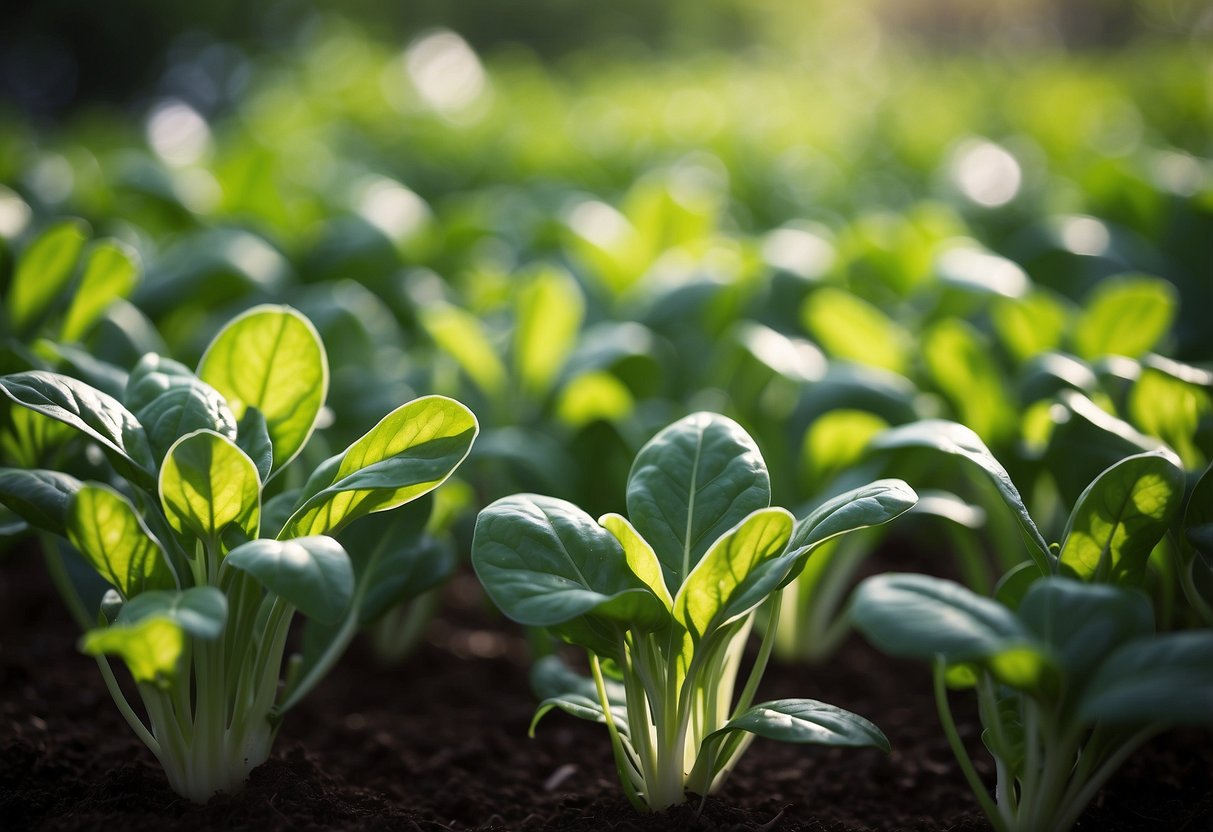
March is a great time to sow spinach outdoors. This leafy green thrives in cool weather, making it perfect for early spring planting.
To start, choose a spot in your garden that gets full sun. Spinach grows best in well-draining soil, so make sure your garden bed is prepared.
Sow the seeds about half an inch deep and 2-4 inches apart. Keep the soil moist, and within a few weeks, you’ll see your spinach sprouting. Enjoy your fresh, home-grown spinach! For more details, check out these tips for March vegetable gardening.
8) Divide Perennials

Dividing perennials is a great way to keep your garden healthy. Look for signs like a ring of foliage around a dead center. This means it’s time to divide.
Use a shovel to dig up the clump. Then, separate the roots by hand or use a knife for woody crowns.
Replant the sections quickly to keep them from drying out. For more detailed steps, visit How to Divide 45 Favorite Perennials.
9) Start Potatoes
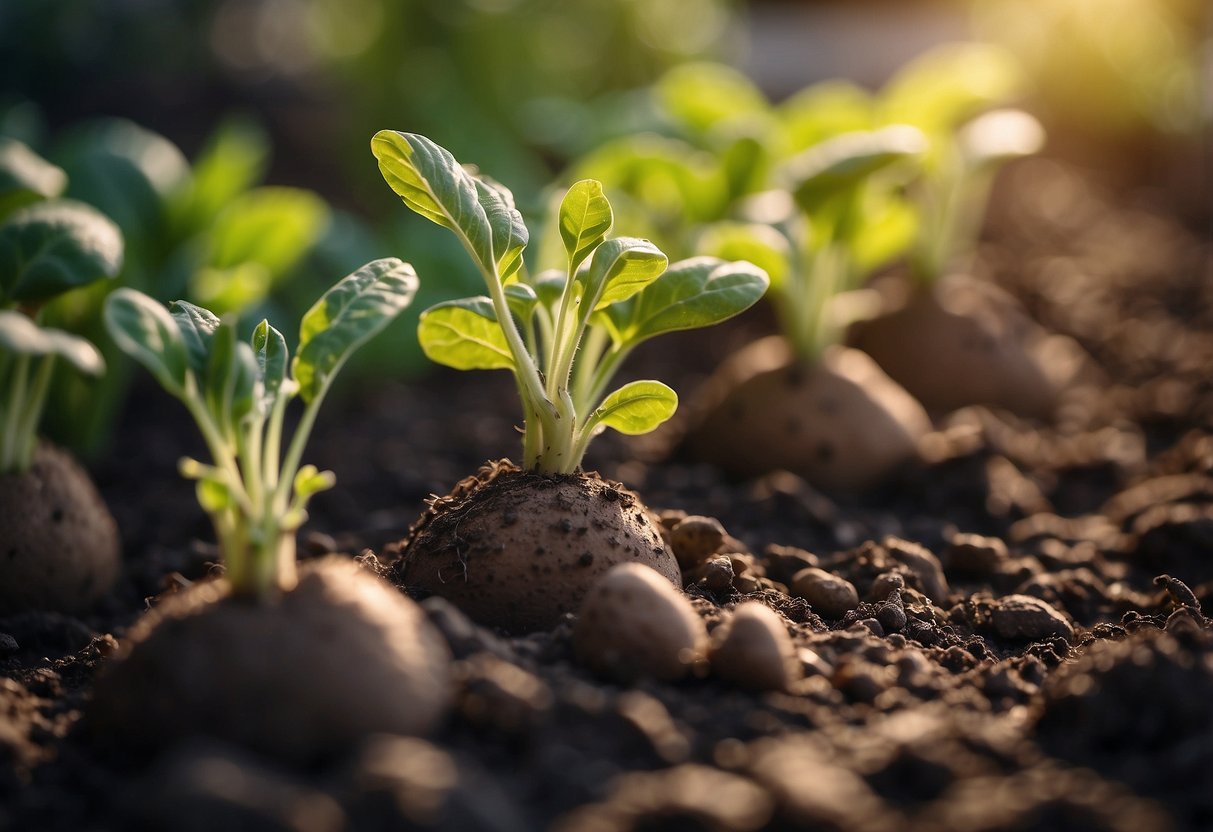
March is a great time to start planting potatoes. Ensure the soil temperature stays above 45°F (7°C) to avoid frost damage.
Plant your seed potatoes 2 to 4 inches deep and 12 to 18 inches apart. To keep them healthy, water at the roots and avoid wetting the leaves.
Consider organic gardening methods for a more natural approach.
10) Plant Asparagus Crowns

March is the perfect time to start planting asparagus crowns. Choose a sunny spot in your garden with well-drained soil.
Dig trenches that are about 12-18 inches wide and 6-12 inches deep. Space the crowns 12-18 inches apart. Make sure to place the bud side up, and cover them with a few inches of soil.
You can find more tips on how to grow asparagus here. Happy gardening!
Preparing Your March Garden

Getting your garden ready in March is key to a successful growing season. Focus on enhancing the soil and selecting the best plants to flourish as spring approaches.
Soil Preparation
Begin by clearing out any debris and dead plants from the winter months. This will make space for new growth. Add a layer of compost to enrich the soil with organic matter, which boosts its fertility.
March is also an ideal time to test your soil’s pH level. Most plants thrive in soil with a pH between 6.0 and 7.0. You can use a home testing kit for this. If your soil is too acidic or alkaline, adjust it by adding lime or sulfur respectively.
If your soil is compacted, tilling can help break it up. This improves drainage and helps roots grow more easily. Also, consider covering your soil with mulch. Besides keeping weeds at bay, mulch helps retain moisture.
Choosing the Right Plants
March is perfect for planting cool-season vegetables. Cabbage, spinach, radishes, lettuce, and broccoli do well in cooler temperatures, making them ideal choices.
For those starting seedlings indoors, now is the time to harden them off before transferring them outside. Place the seedlings in a sheltered location for a few hours each day to acclimate them to outdoor conditions.
Don’t forget to prune any frost-damaged branches from perennials or shrubs. This encourages healthy new growth once the weather warms up.
If you started seeds too early or if the seedlings are outgrowing their pots, transplant them into larger containers until the outdoor planting time arrives. This ensures they continue to develop strong roots.
Planting Techniques for Early Spring
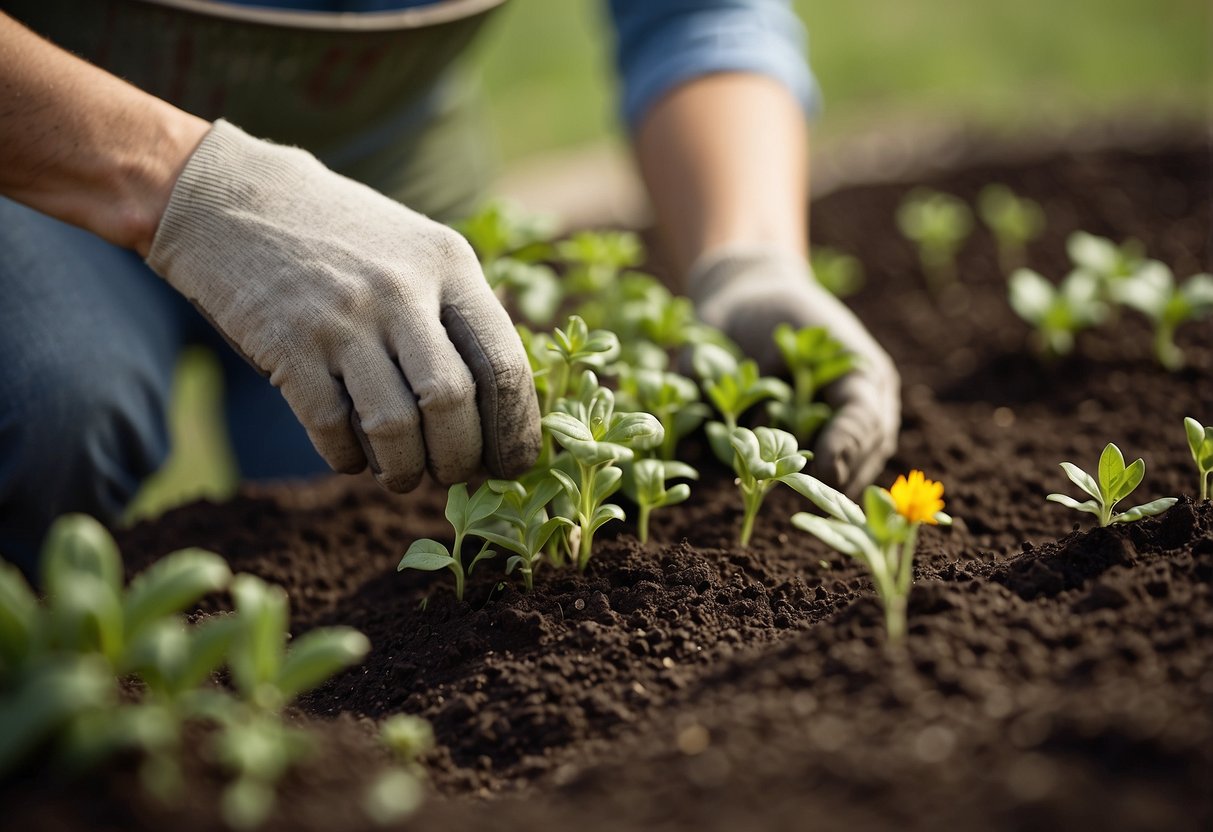
Starting seeds indoors and transplanting seedlings outside are vital steps for a successful early spring garden. These techniques help your plants get a strong start before they face the elements.
Seed Starting Indoors
Starting seeds indoors gives your plants a head start on the growing season. You’ll need seed trays, potting mix, and grow lights. Fill your trays with potting mix and plant seeds at the depth specified on the seed packet. Keep the soil moist, but not waterlogged.
Place your trays under grow lights or in a sunny window. Light is crucial for seedlings to grow strong and healthy. Many plants need around 12-16 hours of light per day. As seedlings grow, thin them out to ensure each plant has enough space.
Using a heat mat can help seeds germinate faster. Monitor the temperature and adjust as needed. Once seedlings have a few sets of true leaves, they’re ready for hardening off, which prepares them for outdoor planting.
Transplanting Seedlings
Before moving your seedlings outdoors, start the hardening-off process. This means slowly exposing them to outdoor conditions over 7-10 days. Begin by placing them outside for a few hours in a shaded spot, then gradually increase the time and sunlight exposure.
Choose a cloudy day or plant in the late afternoon to minimize transplant shock. Water the seedlings well before and after transplanting. Dig holes that are large enough for each root ball.
Gently remove the seedlings from their trays, being careful not to damage the roots. Place each one in its hole and fill in with soil. Pat the soil down lightly and water again to settle the roots. Adding a layer of mulch around seedlings helps retain moisture and keep weeds at bay.
Caring for Your March Garden

In March, your garden requires specific care to thrive. Focus on proper watering and handling pests and diseases effectively.
Watering Tips
In March, it’s crucial to keep an eye on your garden’s watering needs. New plants and seedlings require consistent moisture to establish their roots. Water early in the day to reduce evaporation and help plants absorb what they need.
Check the soil moisture regularly. Stick your finger about one inch into the soil. If it feels dry, it’s time to water. Avoid watering too frequently to prevent root rot. Using a mulch layer can help retain moisture and keep the soil temperature stable.
If you have potted plants, remember they dry out faster than those in the ground. Make sure you water them more often but avoid waterlogging by ensuring good drainage.
Pest and Disease Control
March is also a time to be vigilant about pests and diseases. Inspect your plants regularly for signs of trouble. Look for discolored leaves, holes, or unusual spots. Prune off branches killed by fire blight and remove black knots from cherries.
Disinfect your pruners with rubbing alcohol between cuts to prevent the spread of disease. This small step can protect your garden from widespread infection.
Using organic pest control methods like neem oil or insecticidal soap can help manage pest populations without harming beneficial insects. Keep the garden clean by removing debris where pests may hide, and regularly check for pests like aphids or mites.







